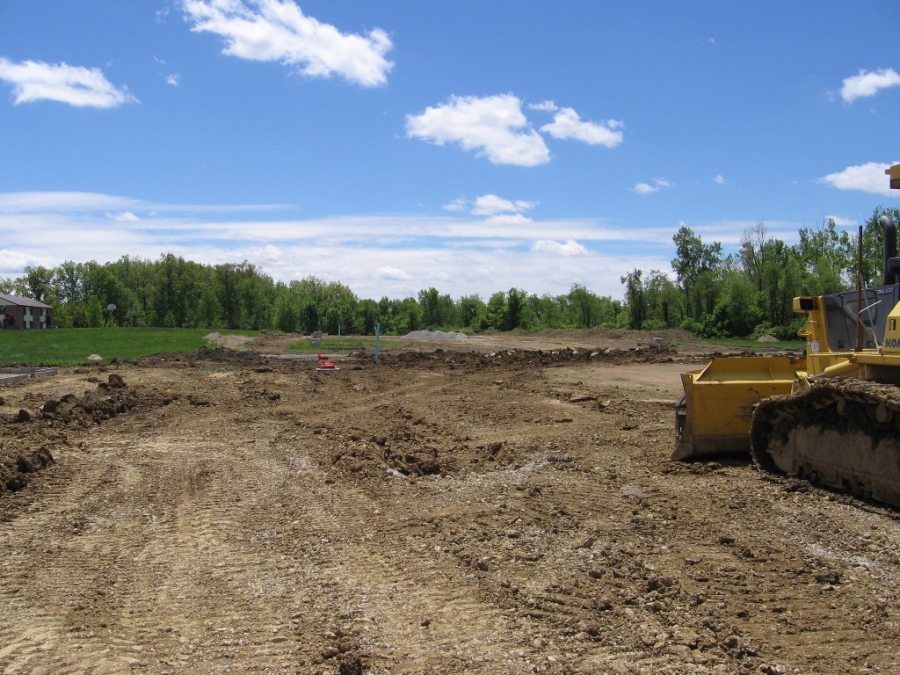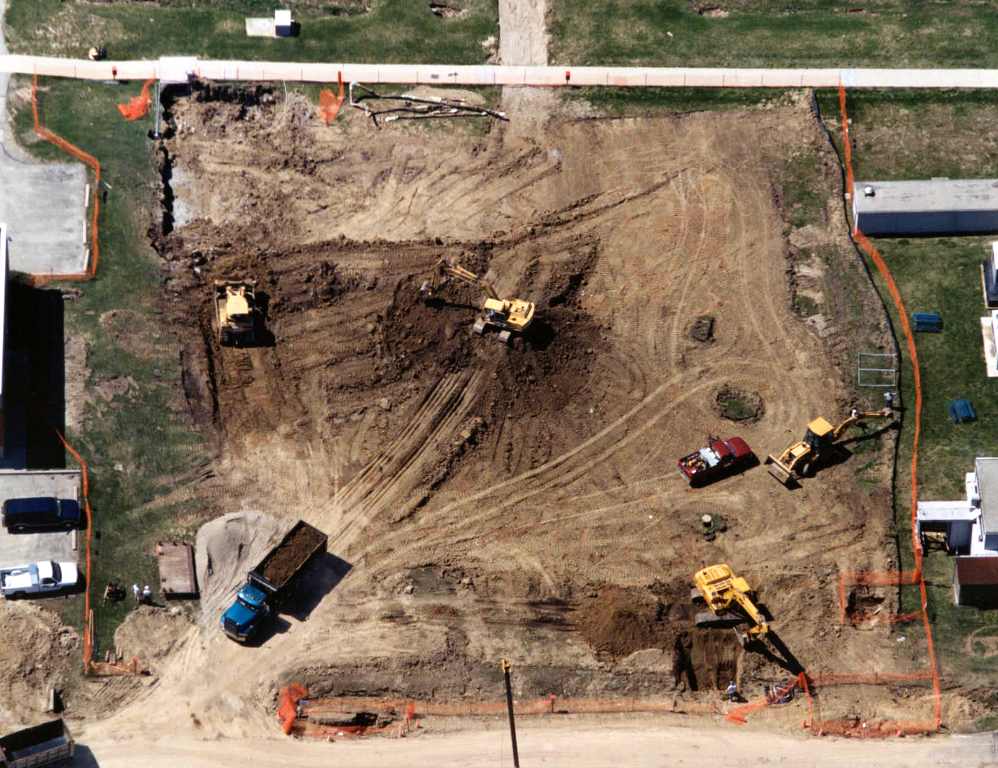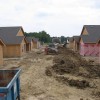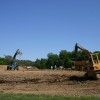Grading
Grading activities take place after clearing the project site of demolition debris, vegetation, and top soil. Grading refers to the adjustment of site slopes to the extent required to facilitate new construction and site function, including proper storm water run-off gradients and features. Having both an existing site survey (including a soil investigation) and a new construction site plan are critical to understanding the starting topography and desired end state throughout the project area. Also important is an evaluation of the existing site soils to match new construction purposes such as foundation work, or even to facilitate temporary construction needs such as equipment movement and soil sediment control.

Grading requires earth-moving equipment that can level the site, create slopes, and flatten slopes that currently exist, as needed. This includes any combination of blade graders, excavators, loaders, bulldozers, and soil compactors. Grading equipment is used to “cut and fill,” removing excess soils from high areas and filling in the low areas. If suitable soils are present at the site, keeping the required redistribution of soils to a minimum will reduce the amount of labor and equipment time required, saving project costs. This is often seen in roadway construction where the soil volume contained in embankments and exit ramps is matched by that of required roadway cuts to the extent possible. Grading costs can be greatly controlled by aligning the new site development plan as closely as possible with the existing topography. If the onsite soils are not suitable for the entire project, shipping new soils to the site will be required, increasing costs.

The basic steps for any grading project include determining and staking out areas of similar work, identifying obstructions, installing temporary sediment control, and then performing the earthwork necessary to create slope adjustments. Areas to be cut and filled should be surveyed, matched with the site plan, and bounded with stakes to provide guidance to the equipment operators. Likewise, buried utilities that could be damaged by equipment operations should be identified and flagged. Major new structures’ locations such as building foundations, should be identified as well in order to provide points of reference for slope requirements. To the extent possible, leaving a perimeter area of the initial site conditions undisturbed will slow down surface water runoff and aid in sediment control as the site interior is graded. Sediment control fabric fences or other sediment control measures along stream banks and storm water intakes should be installed. Most project specifications will require new slope construction limits, such as two horizontal units to one vertical, unless slope stabilization methods are used. Progress should be monitored with surveying equipment to ensure that new elevations and slope dimensions are correct and that they match the new site plan requirements.

Buildipedia Staff
The Buildipedia research and writing staff consists of dozens of experienced professionals from many sectors of the industry, including architects, designers, contractors, and engineers.
Website: buildipedia.com/




